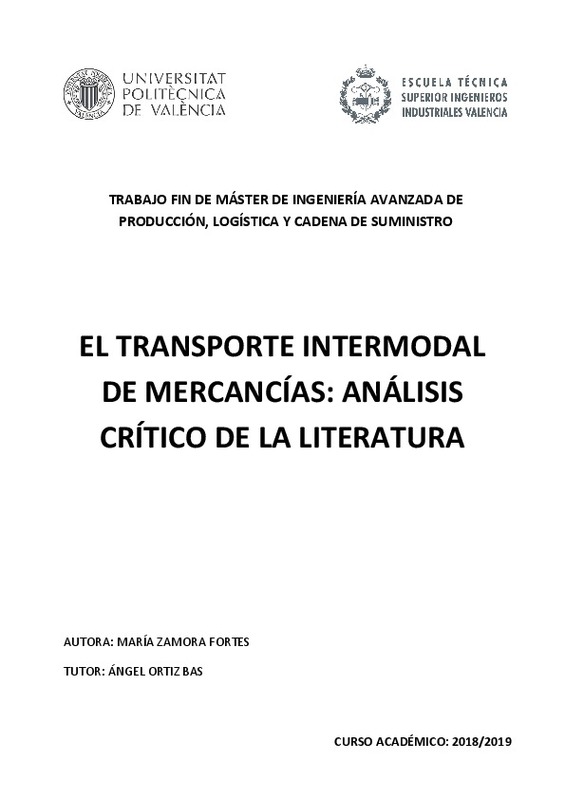|
Resumen:
|
[ES] Esta tesis tiene como objetivo mostrar las ventajas que una puerta de video inteligente, que utiliza un sistema OCR, puede aportar a terminales intermodales donde ciertos procesos del transbordo entre camiones y trenes ...[+]
[ES] Esta tesis tiene como objetivo mostrar las ventajas que una puerta de video inteligente, que utiliza un sistema OCR, puede aportar a terminales intermodales donde ciertos procesos del transbordo entre camiones y trenes son sucpetibles de sfurir una automatizacion para mejorar la eficiencia de este tipo de terminales.
El análisis realizado en esta tesis se realiza desde dos puntos de vista diferentes, el cualitativo y el cuantitativo, para el cual se utiliza el caso de estudio de Malmö. El primer análisis se centra en cómo funcionan las terminales intermodales y qué elementos de las mismas interactúan y cómo lo hacen para lograr el propósito de la terminal, y cómo la puerta de video inteligente es capaz de afectar de alguna manera a este funcionamiento, principalmente de forma forma positiva para permitir un mejor funcionamiento del terminal.
Desde el punto de vista cuantitativo lo que se realiza es un análisis de los tiempos y económico de la terminal tntermodal de Malmö, que se basa en la información obtenida del análisis cualitativo y de los datos proporcionados por los operadores de la terminal que permiten realizar diferentes simulaciones para comparar el efecto de la implantación de puerta de video inteligente en esta terminal específica, y que podría extenderse a terminales intermodales similares ubicadas en regiones con condiciones laborales similares, y que como la Unión Europea, cuentan con un enorme sistema de carga estandarizado.
Finalmente, lo que se afirma con los datos aportados, a pesar de no permitir realizar la simulación más compleja y representativa, es que el objetivo de la puerta de video inteligente se alcanza con éxito con una gran mejora de la eficiencia, lo que permite asegurar con bastante certeza que se recomienda la implantación del sistema en este tipo de terminales.
[-]
[EN] This thesis aims to show the advantages that an Intelligent Video Gate, which uses an OCR system, can provide to intermodal terminals where transhipment among trucks and trains is carried out throughout some processes ...[+]
[EN] This thesis aims to show the advantages that an Intelligent Video Gate, which uses an OCR system, can provide to intermodal terminals where transhipment among trucks and trains is carried out throughout some processes automation that can improve the efficiency of this kind of terminals.
The analysis carried out in this thesis is made from two different points of view, the qualitative and the quantitative, by using the Malmö study case. The first analysis is focused on how the intermodal terminals works and which elements of it interact and how, in order to achieve the purpose of the terminal, and how the Intelligent Video Gate is able to affect in any way to this functioning, mainly in a positive way that allows the better functioning of the terminal.
From the quantitative point of view what is carried out is a timing and economic analysis of the Malmö Intermodal Terminal, which is based on the information obtained from the qualitative analysis and from the data provided by the terminal operators that allow to make different simulations to compare the effect of the Intelligent Video Gate implantation in this specific terminal, and that could be extended to similar intermodal terminals located in regions with similar labour conditions and that as the European Union have a huge standardized freight system.
Finally, what is stated with the provided data, despite not allowing to make the most complex and representative simulation, is that the aim of the Intelligent Video Gate is reached successfully with a great improvement of the efficiency what allows to ensure with quite certainty that the system implantation is recommend in this kind of terminals.
[-]
|










